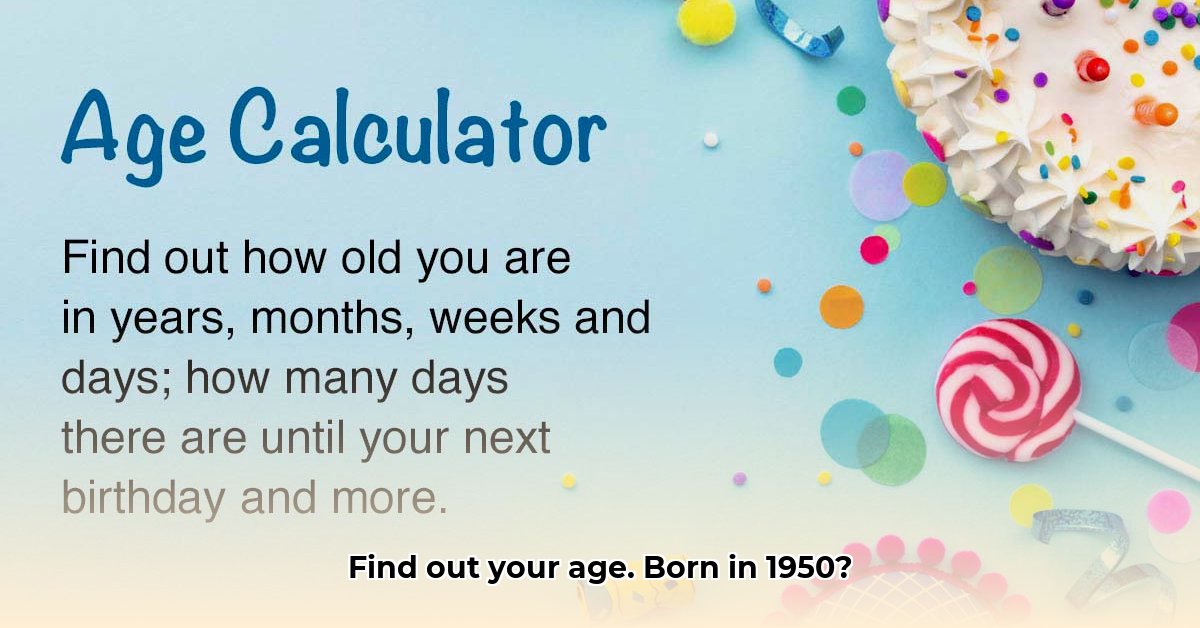
Determining your age seems simple – subtract your birth year from the current year. However, this seemingly straightforward calculation reveals surprising complexities when considering global cultural practices and computational challenges. For a specific example, see this helpful resource on calculating age: age calculation example. This article explores the nuances of age calculation, offering both an informational overview and a practical guide to accurate age determination across various systems.
The Western Age Calculation System: A Deep Dive
The prevalent Western method utilizes the Gregorian calendar. To calculate age, subtract your birth year from the current year. For example, someone born in 1950 would be 74 years old in 2024 (2024 - 1950 = 74). However, a refinement is needed: if your birthday hasn't yet occurred in the current year, subtract 1 from the result. This seemingly minor detail highlights the inherent complexities, which become even more pronounced in other cultural contexts.
Alternative Age Calculation Systems: A Global Perspective
Not all cultures adhere to the Gregorian calendar or the same age calculation methods. Consider the lunar calendar, widely used in East Asian countries. Lunar calendars track the cycles of the moon, resulting in years of varying lengths compared to the solar year. Furthermore, cultural practices influence how age is reckoned. In some East Asian cultures, a person is considered one year old at birth, and an additional year is added at each Lunar New Year. This means someone born on December 31st might be considered two years old on January 1st of the following year according to the lunar calendar's reckoning. This highlights a crucial distinction: age is not merely a numerical value but also imbued with cultural significance.
Computational Challenges and Data Harmonization
These diverse age calculation systems present significant challenges to data management and computation. Databases require consistent age representation for accurate analysis. Discrepancies arising from different cultural methods can lead to errors in demographic studies, healthcare records, and legal documentation. Harmonizing age data across different cultural systems necessitates careful consideration of cultural contexts and the implementation of flexible computational approaches. Software development needs to integrate conversion algorithms that account for these nuances, considering that even a simple age calculation can yield different results depending on the calendar and cultural practice used.
A Practical Guide to Accurate Age Calculation
Let's translate the theoretical into the practical. The following step-by-step instructions provide a reliable method for calculating age under different systems.
1. Western Age Calculation:
- Determine the Current Year: Identify the current year (e.g., 2024).
- Obtain the Birth Year: Note the individual's birth year (e.g., 1950).
- Initial Calculation: Subtract the birth year from the current year (2024 - 1950 = 74).
- Birthday Adjustment: If the individual's birthday has not yet passed in the current year, subtract 1 from the result (74 - 1 = 73).
2. Simplified East Asian Age Calculation (Illustrative):
- Determine the Current Year.
- Obtain the Birth Year.
- Add 1 to the result obtained by subtracting the birth year from the current year. This method assumes that an individual is considered one year old at birth.
These examples illustrate the fundamental differences and the steps needed for accurate calculation. Note that more sophisticated algorithms may be required for truly precise calculations using lunar calendars, as the precise start and end dates vary each year.
Real-World Applications and Conclusion
The accurate calculation of age has far-reaching consequences. In healthcare, precise age is crucial for appropriate treatment and preventative care. Demographics relies on accurate age data for population analysis and resource allocation. Legal systems utilize age for determining eligibility and responsibilities. Understanding the varied approaches to age calculation is therefore of paramount importance for maintaining accuracy and consistency across these diverse fields. Failing to account for these cultural variations can lead to significant errors. The seemingly simple question, "How old am I if I was born in 1950?", therefore, unveils a complex landscape requiring careful consideration of both cultural practices and computational methods.